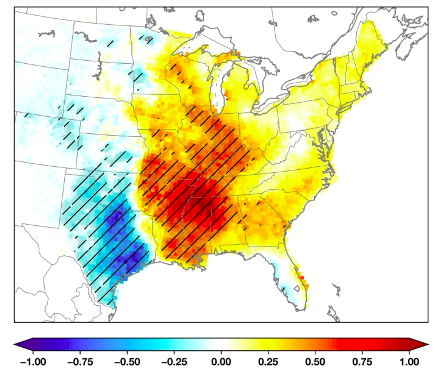Is ‘Tornado Alley’ Expanding East?

Tornados are nature’s most violent storms. Typically spawned from powerful thunderstorms, these destructive forces of nature can cause fatalities, detrimental damage, and wipe out neighborhoods in a mere matter of seconds.
Since the term was first coined in 1952, “Tornado Alley” has traditionally been located throughout portions of the central U.S., typically from north-central Texas to South Dakota. Tornados are most frequent in this region and have an increased chance of being more destructive.
However, science shows this tornado prone area may be expanding east.
According to a 2018 study, tornado frequency has decreased over the past four decades across Tornado Alley, while increasing just to the east across the Lower Great Lakes and into the Deep South.
Tornado Frequency

The study also reports negative tendencies of tornado occurrence have been noted in portions of the central and southern Great Plains, while robust positive trends have been documented in portions of the Midwest and Southeast U.S.
Though trends point to fewer tornado occurrences in the Great Plains, AgDay meteorologist Matt Yarosewick warns that the risk for tornadic weather isn’t necessarily declining.
“The United States is the most active spot on the globe for tornadoes,” Yarosewick says. “The climate, the geography and all those ingredients are always in play. There will always be tons of talk about the number of tornadoes or the intensity. It is all due to the warming climate and the overall larger moisture content in the atmosphere. Most early season severe weather outbreaks are occurring east of "tornado alley." That is because the east is more active in the springtime with storm fronts whereas “tornado alley” is infamous for the dry line setups on hot summer says. Different times of the year will bring many different setups.”
Along with tornadic weather conditions expanding east, frequency is also increasing.
“The conditions needed for tornadoes are occurring more frequently due to the warming of the planet and the moisture content in the air,” Yarosewick says. “These stronger storm systems feed off of all of those types of conditions and will then, in turn, produce stronger storms and potentially more tornadoes due to the frequency of the events.”
As severe weather begins to ramp up across the U.S., it’s important to keep tornado safety at the top of mind. Planning ahead will lower the chance of injury or death in the event severe weather strikes.







